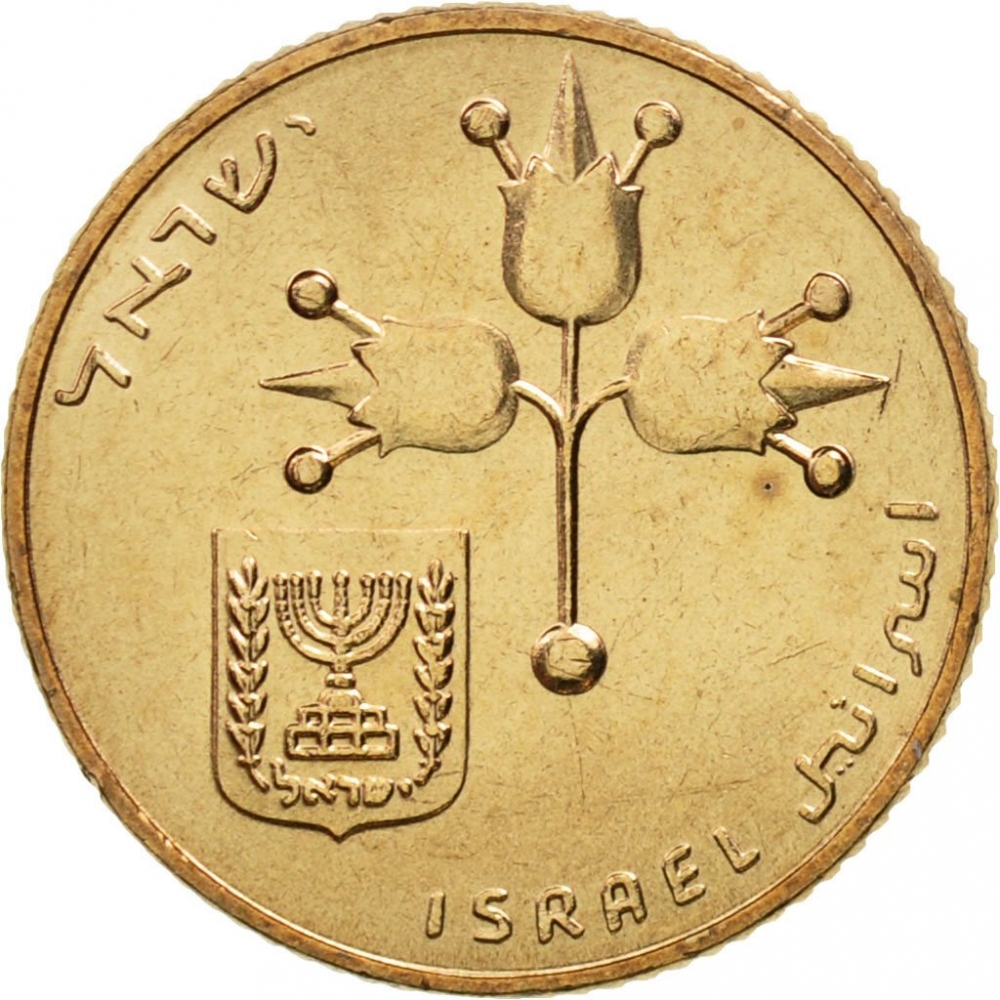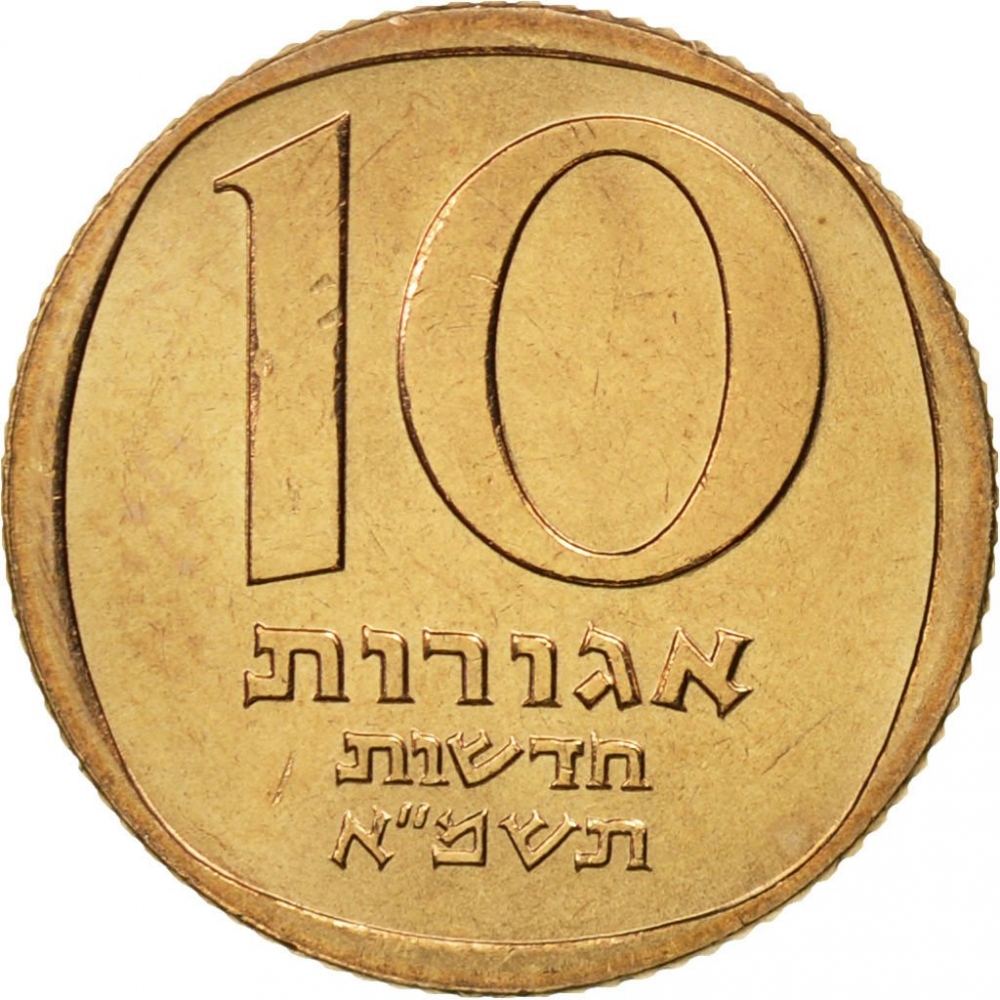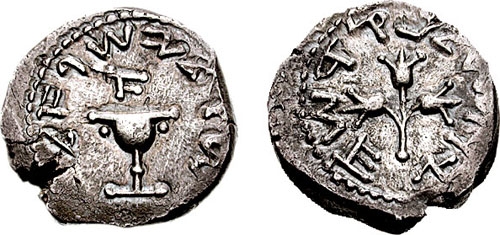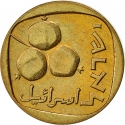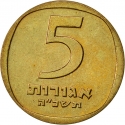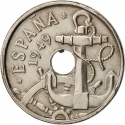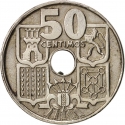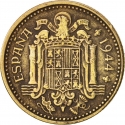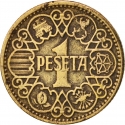You are about to finish your registration. Please check your mailbox (including spam folder). There should be a letter with a confirmation link. Check setting to make sure that your e-mail address is correct.
Send letter againDescription
Date of issue: February 24, 1980
Ceased to be legal tender: February 28, 1985
Obverse

|
Three pomegranates; the emblem of the State of Israel; "Israel" in Hebrew, Arabic and English. ישראל |
|---|---|
Reverse

|
The denomination "10 New Agorot" and the date in Hebrew. 10 |
| Edge |
10 New Agorot
KM# 108
Characteristics
| Material | Nickel Bronze |
| Weight | 2.1 g |
| Diameter | 16 mm |
| Thickness | 1.38 mm |
| Shape |
|
| Alignment | Medal |
| Mints |
Jerusalem Mint Paris Mint (A) Royal Canadian Mint (RCM) Stuttgart State Mint (F)
|
